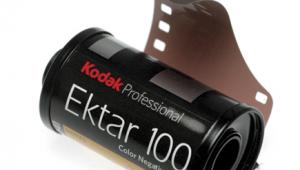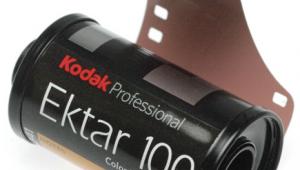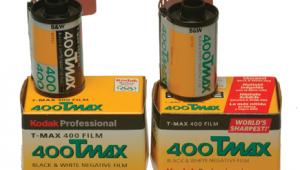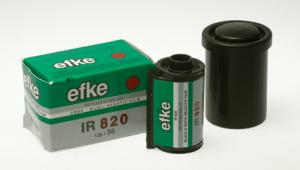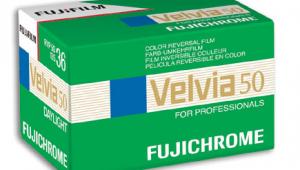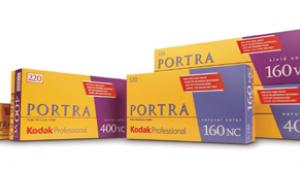Rollei’s ScanFilm; A Unique “Mask-Less” Color Neg Film
The name says it all: Rollei's ScanFilm 400CN Pro is an ISO 400 color negative film (Kodak C-41 compatible) for scanning, rather than for wet printing. The big difference is that the orange mask, incorporated in almost all color negative films since the 1950s, is omitted: it just isn't needed if you are scanning.
On the other hand, the orange mask is no significant disadvantage for scanning, either. How could it be? Scanners are specifically designed to cope with the mask, and modern masked color films are specifically designed to be compatible with scanners. The omitted mask, then, is no real reason to try ScanFilm.
 |
 |
|
|
||
Fortunately, a much better reason to try ScanFilm is that it offers a unique look: warm, grainy, unsharp, and desaturated. It is, in a sense, the natural successor to those long-gone slide films, Anscochrome 500 and Ferrania/Scotch/3M 1000D and 640T. They, too, were unsharp, desaturated, and grainy, but in the right hands, for the right subject, they were unbeatable. The same can be said of ScanFilm, and a C-41 compatible negative film is a lot more convenient than those old slide films.
Then again--and we apologize for turning this into a "good news/bad news" sequence--ScanFilm is the subject of another substantially unsupportable claim: that because the orange mask is omitted, it can be treated as a "universal" film and wet printed on black and white paper in a conventional darkroom. If this were true, it would be a unique advantage, but it is (to be generous) misleading. We'll come back to this later.
According to Maco, who "convert" the film for Rollei (cut and package it from "pancakes" sliced from a master roll), ScanFilm is actually a Gevaert aerial film, coated in Belgium: the slightly misleading "Made in Germany" label refers to the conversion process. Gevaert was part of the Agfa empire, and has apparently survived as an independent specialist coating plant, though alas for devotees of Agfa's red diamond there seem to be no plans to reintroduce any of the more mainstream Agfa films.
It must be loaded in very subdued light, not because of the lack of an orange mask, but because it is on a polyester base instead of triacetate. Polyesters are wonderfully, archivally permanent; are much tougher than triacetate; and have only one major drawback for 35mm, namely, "light piping," or transmitting light through the length of the film from the protruding tongue. If you load this film in overly bright light--even a brightly lit room--the first few frames will be an interesting blue, and there will be blue marks around the sprocket holes for a long way into the film. This isn't necessarily a major problem, but it's something you have to be aware of.
 |
|
 |
|
|
Roger exposed it just like any other 35mm ISO 400 color negative, in a Leica MP, and made a number of direct comparison shots with Kodak's latest Portra 400 films, exposed in a second Leica body (M4-P) with the same lens.
First, we made "contacts" of the whole films (in Print File archival sleeves, the best you can get) using an Epson Expression Pro 1680 flat-bed. The auto settings ("TPU for negative film") gave satisfactory though warm and rather faded colors. We very much liked the effect: instant nostalgia.
Next, we chose subjects that Roger had shot both on the ScanFilm and the Portra, and scanned individual frames with the (now unfortunately discontinued) Konica Minolta DiMAGE Scan Elite 5400 II. Once again, we used the automatic settings to begin with.
Once again, we liked the results. As with the flat-bed, the pictures scanned "warm." It's true that you can do anything you want in postproduction with a scanned film, but it's gratifying (not to say time-saving) when it comes close to what you want on the basic, automatic scan. In postproduction, the thing we most often did was to cut the yellow slightly, because actually, it was sometimes too warm for our taste. Sometimes, too, we boosted the contrast slightly either via "Brightness/ Contrast" or by adding black in "Selective Color" (all in Adobe's Photoshop). If you do cut the yellow, you may want to change other aspects of the color balance, too.
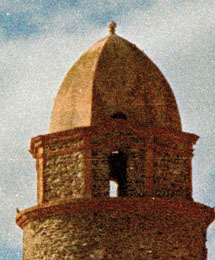 |
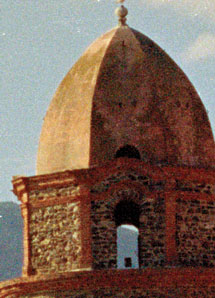 |
|
|
||
As already noted, the Scan Film 400CN Pro scans were distinctly grainier and exhibited significantly less resolution and sharpness as compared with the Portra--which is what you would expect when you compare it with the latest and best color film from either the best or the second-best manufacturer of color films in the world: we'll leave Kodak and Fuji to dispute that one between them. But fine grain and high sharpness are not everything: films have their own "magic," which goes beyond objective criteria, and the new Rollei film is certainly not short on "magic."
Next came the part about which we were most suspicious: "wet" printing on black and white. Quite frankly, this struck us as a claim too far. If they had let the film stand on its own as a unique color film, no one could have argued with them.
 |
 |
|
|
||
The first thing Frances noticed in the darkroom was the lack of contrast. The lowest contrast she needed, printing on Ilford's Multigrade Warmtone, was Grade 4; Grade 5 was better; and in several cases, Grade 5 graded paper (Ilfospeed) was better still, because Grade 5 graded is always harder than Grade 5 variable contrast. This alone makes it a great deal less versatile than a proper black and white film, whether conventional process or C-41 compatible (such as Ilford's XP2 Super). It is not completely useless, but it is hard to see that claims of universality are justified.
- Log in or register to post comments





